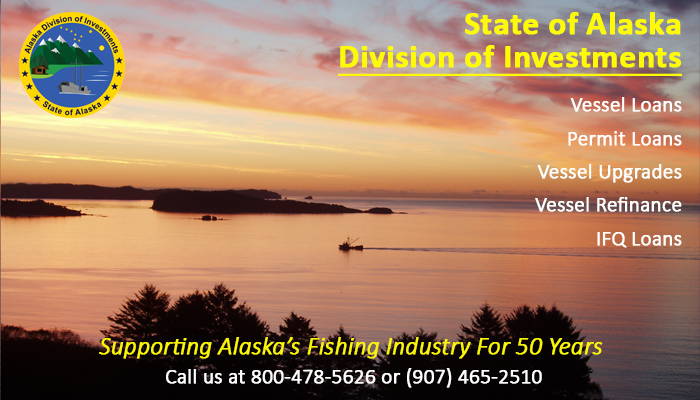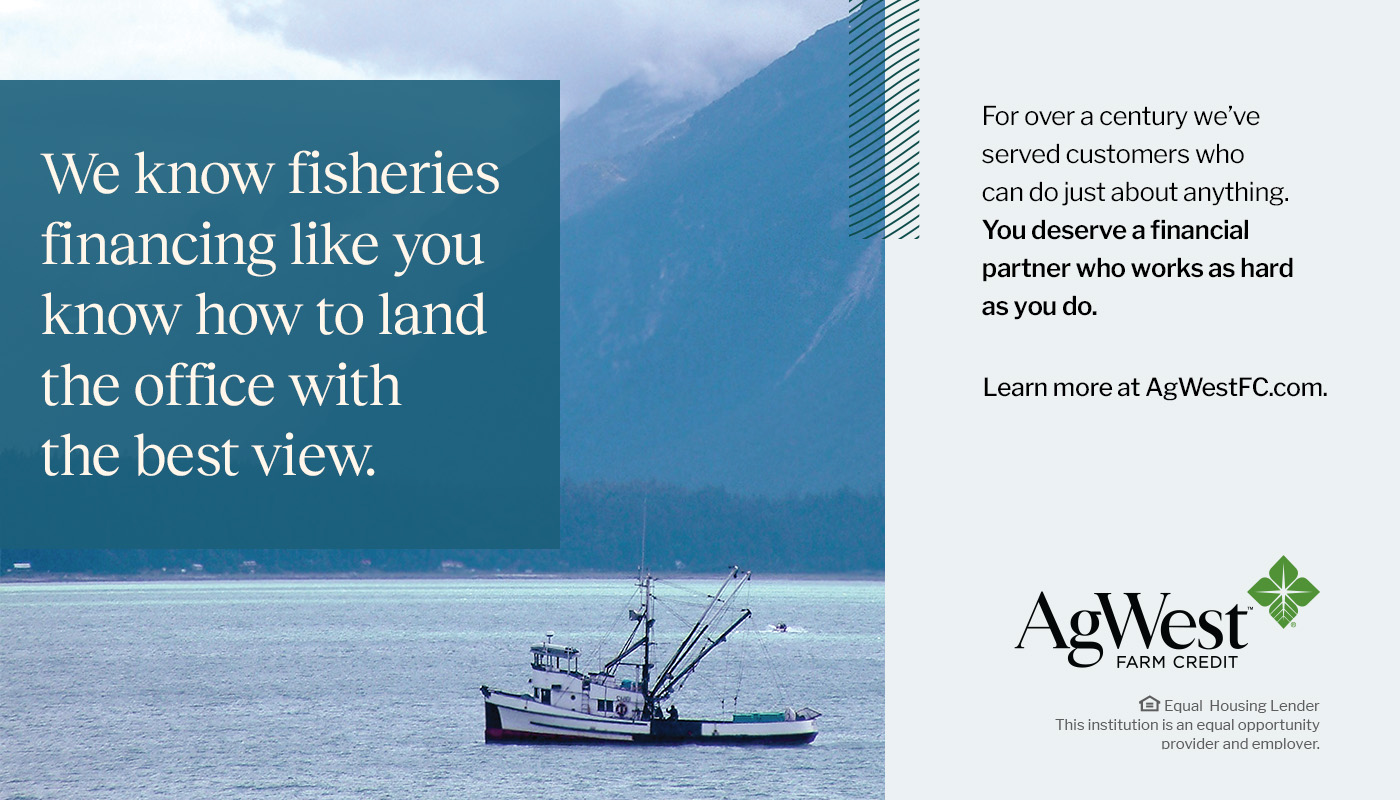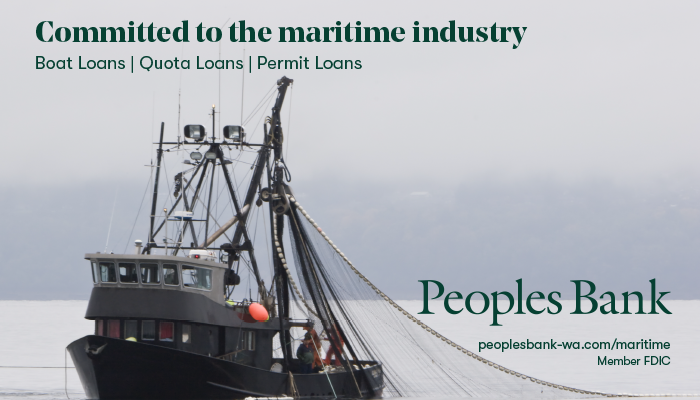The Fish Ticket
May 2, 2024
Permits & State Fisheries
With the finalization of federal management of Cook Inlet's EEZ (more on that below), drift permits are getting more interest. We sold a Cook Inlet drift permit at $24,000 this week and have an offer of $25,000. Our lowest asking price is $27,500. EMTs are in the mid $4,000 range, with a current offer of $4,250 and a listing at $4,500. For Bristol Bay, drift permits are still hanging out where they were last week, with another sale at $135,000 this week, and a new offer of $137,500. EMTs are still in the $15,000 range, with a lease at $15,500 this week and a current offer of $15,000. For Area M, we have a new drift permit listed at $115,000, but still don't have any offers. For Kodiak, we have a new offer of $30,000 for a setnet permit.
Cook Inlet. It's been a tough one to follow, am I right? The Feds (NMFS) have officially taken over management of the federal waters (EEZ) of Cook Inlet, separating the state and federal waters into two separate fisheries with the publication of Amendment 16. What does this mean for Cook Inlet drift fishermen? Well, a lot. For starters, they'll have two 12-hour openers per week during the season (7am-7pm Mondays and Thursdays), which will open June 20. Boats fishing in the federal fishery will need a salmon federal fisheries permit (SFFP), a Vessel Monitoring System (VMS), and a logbook. And, fishermen can't fish in both federal waters and state waters in the same day. NMFS has a "compliance guide" that's pretty clear and should answer most of your questions. NMFS also published proposed harvest specs for the federal waters fishery, including a Total Allowable Catch (TAC) of 492,100 sockeye. (If you have thoughts to share on the proposed specs, click the green "submit a formal comment" button at the top of the page. The comment deadline is May 13.)
Again, there are a lot of changes. To help the fleet understand the new regs, NMFS is holding two in-person meetings (May 15 in Kenai and May 16 in Homer) and one webinar. Click here for more info. And, as for the state waters fishery, ADFG published a summary of changes for Upper Cook Inlet following this year's BOF meeting.
The Copper River salmon fishery opens on May 16 and suppliers are reporting strong preseason interest, with pre-orders for sockeye fillets at $59.99/lb and Chinook fillets at $99.99/lb. I can't believe it's almost that time of year again.
In other ADFG news:
- In the Kodiak Area, the state-waters Pacific cod jig fishery closed April 30 and the parallel Pacific cod jig fishery opened today.
- In Lower Cook Inlet, the Southern District will open to setnetters June 3, and is expected to open to seiners June 10.
- The Southeast beam trawl shrimp fishery opened May 1.
- ADFG published the 2023/2024 Southeast sea cucumber fishery summary.
IFQs & Federal Fisheries
The market for black cod and halibut quota was pretty quiet this week, but we do have an offer of $29.00 for 3A unblocked quota and an offer of $24.00 for 3A blocked quota.
Despite the large volume of fish coming in to Homer, the price increased a bit to $5.50/$6.25/$6.50 today. No improvement in the black cod dock prices, with reports of a three-way split at $1.00 for under 3 pounds, $2.00 for 3 to 5 pounds and $3.00 for 5 and ups in Whittier. One of the reasons for the extremely low ex-vessel prices for black cod has to be that Japan’s yen, at ¥153/$1.00 as of this writing, is at its lowest level since 1990. Ouch.
28% of the 2C TAC has been harvested, 18% of 3A and 11% of 3B, with the remaining areas still confidential. 2,717,873 pounds of halibut have been landed, with Homer having landed 785,173 pounds and Seward a distant second at 212,353 pounds. For black cod, 21% of CG has been harvested, 31% of SE, and 34% of WY, with the rest confidential. 9,657,196 pounds of black cod has been landed, with Kodiak taking 2,109,097 pounds so far and Seward at 1,827,756 pounds.
Quota holders: are you looking for someone to catch your quota this season? Check out our improved IFQ Charters page for an up-to-date list of vessels looking to catch your quota.
What Else?
UFA issued a letter opposing Curtis Chamberlain and Märit Carlson-Van Dort for the state Board of Fisheries. Governor Dunleavy appointed Chamberlain to serve his first term on the BOF, and reappointed Carlson-Van Dort for her second term.
The Copper River Prince William Sound Regional Seafood Development Association and the Bristol Bay Regional Seafood Development Association are joining forces to promote wild Alaska salmon this year, in hopes of increasing awareness and consumer demand. Teamwork makes the dreamwork!
NOAA issued its annual Fisheries Economics of the United States 2022 report. In 2022, 61.5% of all seafood landed in the US came from Alaska, which is pretty neat. For the 26th year in a row, Dutch Harbor was the #1 port for deliveries, with 613.5 million pounds valued at $160 million.
Roe prices and volumes are on the rise for Alaskan salmon and herring. More value is derived from roe than from any other product form, and yet none of it goes to fishermen or the State of Alaska in landing taxes.
Last week, the Army Corps of Engineers again rejected Pebble Mine. This week, Representative Peltola introduced legislation that would ban Pebble Mine for good, codifying the EPA's 2023 decision to block the mine.
This week's Alaska Fisheries Report: The feds issued a disaster declaration for east side Cook Inlet setnetters and published the final rule for federal management of Cook Inlet's EEZ. Crab fishermen were charged with illegally transporting crab. And a proposal to change how a popular run of hatchery king salmon near Petersburg is managed.
On Friday's Bering Sea Barometer podcast, Pete Neaton gives fishery updates from out West, talks shorebirds and ceviche, and chats with yours truly about the halibut and black cod IFQ system and market.
Russia is expecting a drastically lower salmon harvest this year. Dang...
Recommended reading: a great peek at what it's like to captain a Kodiak seiner for the first time, at the ripe old age of 21. It's not news, per se, but it's well written, funny, and ends with a cliff hanger. 10/10.
A Washington court on Friday granted Wells Fargo's request and appointed the LA-based Stapleton Group as receiver for Peter Pan Seafoods. The Stapleton Group will now have the ability to sell or lease Peter Pan's assets, and will collect an hourly rate of $545.
NMFS released its Annual Report to Congress on the Status of U.S. Fisheries, highlighting successful fisheries management and the broad economic impact of commercial and recreational fisheries. Of note, the number of stocks on the overfishing list hit an all-time low.
Prices for H&G pollock from the US are almost double their Russian counterpart and more valuable than fillets and surimi.
Alaskan salmon's MSC certification is being challenged by three Canadian groups who argue that Alaskan fishermen are intercepting fish headed to BC rivers.
Some reminders:
AMSEA has a ton of upcoming drill conductor classes! Registration and info here.
AgWest Farm Credit (a sponsor of this newsletter!) offers $15,000 New Producer Grants to newer fishermen. That's free money. The deadline to apply is May 31. Note that the flyer refers to agriculturalists, but the grant program is open to fishermen.
The Halibut Defense Group is intervening in a lawsuit to enforce trawl bycatch reductions. Lawsuits are expensive. If this matters to you, please consider donating to the Halibut Defense Fund.
Applications are open for ALFA's 2024 Crew Training Program.
Real Time Data is looking for halibut and sablefish fishermen to test their e-logbook program, Deckhand, in the GOA this year. Fishermen will receive free software access for 2024 and 2025, a $500 stipend, and an iPad, case, and mount to keep if they participate in the full project duration. Ready to ditch the pen and paper? More info here.






